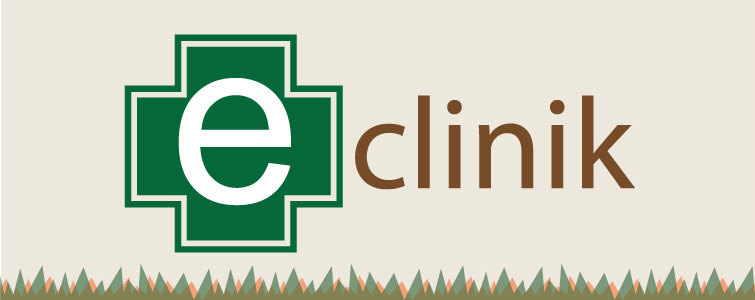Vegetables
POTATO
Insect pests cause major problems for potato farmers in India. Around 60 billion rupees are reported as the lost due to pest damage annually, that accounts 10-20% of total potato production (Chandel et al., 2012). India has a great diversity of insect pests that attack potato. Normally termites are occasional insect-pest in this crop, however, reported in few cases as serious pests (Beeson, 1940; Krishnamoorthy and Ramasubbiah, 1962; Lall, 1964; Kumar, 1965). The culprit termite species in Tamil Nadu is Dicuspiditermes incola (Beeson, 1940), and in Bihar Eremotermes sp. (Kumar, 1965). Termites species such as Microtermes obesi (Holmgren), O. obesus (Rambur) and Eremotermes spp. were reported ravaging this crop (Butani and Jotwani, 1984).
Two termite species were identified under genus Microtermes (i.e., mycophagus and obesi) (Termitidae: Isoptera) in Jalandhar (Punjab) (Mahapatro et al., 2015). The first one M. mycophagus Dexneux is the first record from potato crop by us. Potato growing areas are divided into six-zones (Rana, 2011 cited by Chandel et al., 2012), and our study-site is under the North-Western plain zone. Termites were identified using external morphology of the soldier caste (Roonwal, 1979). Most of the workers recorded termite attack in tubers. But we recorded termite attack in the seedling stage. M. obsei was reported from potato by earlier workers (Butani and Jotwani, 1984). Earlier we have recorded its pest status for various crops viz. wheat, maize, arhar, chickpea, and also trees like sessoo, neem and teak (Mahapatro and Kumar, 2013).
Termite infestation in young potato crop at Jalandhar (Punjab)
Examining termite infested potato plants in the field
Rain-fed potato is more prone to termite attack than irrigated crops. It is seen that, deep black soils and continuous irrigated areas are free from termites. More damage occurs in drought conditions. Worker caste of termites is responsible for crop damage by injuring roots and making deep holes in tubers. Potato tubers become hollow and are often filled with mud/soil. The leaves of affected plants turn yellow and wilt and ultimately dry up. When infested plants are pulled out, numerous feeding holes are seen on the roots and tubers (Srivastava and Butani, 1998). Herein, we reported the damage to seedling stage only. As termites are not treated as economic pest in potato; our search for label claims of insecticides (Anonymous, 2012) for valid field recommendation, results in negative. However carbofuran 3% CG, phorate 10% CG are label claimed for aphids and jassids, thus these two can be tried-and-tested as soil treatment for termite management programmes.
References
- Anonymous, 2012. Major Uses of Pesticides, Registered under the Insecticides Act, 1968, (Insecticides).
- Beeson, C.F.C. 1940. A Report on the Economic Importance and Control of Termites in India, 74p.
- Butani, D.K. and Jotwani, M.G. 1984. Insects in Vegetables. Colour Publication, Mumbai, 356p.
- Chandel, R.S., Chandla, V.K., Verma, K.S. and Pathania, M. 2012. Insect pest of potato in India: biology and management. In: Alyokhin, A., C. Vincent, and P. Giordanengo (eds.). Insect Pests of Potato: Global Perspectives on Biology and Management. Academic Press, USA, 227p.
- Chhotani, O.B. 1997. Fauna of India, and the adjacent Countries, Isoptera (Termites). Vol. II, Publication Zoological Survey of India, Kolkata, 800p.
- Krishnamoorthy, C. and Ramasubbiah, K. 1962. Termite affecting cultivated crop in Andhra Pradesh and their control: retrospect and prospect. In: Proceedings of Termites in Humid Tropics, New Delhi Symposium, 1960, pp. 243-245.
- Kumar, R. 1965. Termite, a new pest of potato in India. Indian Potato Journal, 7(1): 1-49.
- Lall, B.S. 1964. Vegetable Pests. pp. 187-211. In: Entomological Society of India (eds). Entomology in India, 1938-1963. Entomological Society of India, New Delhi, 529p.
- Mahapatro, G.K. and Kumar, S. 2013. Termites of Delhi: diversity and pest status. Indian Forester, 139(12): 1151-1153.
- Mahapatro, G.K., Sachin, K. and Sharma, K. 2015. New record of pest status of Microtermes mycophagus in potato. Indian J Ent. 78(3): 287 DOI: 10.5958/0974-8172.2016.00075.4
- Rana, R.K. 2011. The Indian potato processing industry global comparisons and business prospects. Outlook Agriculture, 40(3): 237-243.
- Roonwal, M.L. 1979. Termite Life and Termite Control in Tropical South Asia. Scientific Publisher, Jodhpur, 177p.
- Srivastava, K.P. and Butani, D.K. 1998. Pest Management in Vegetables Part-I. Research Periodicals and Book Publishing House Houston, Texas.
BRINJAL
Odontotermes species are recorded as pest of termites in Delhi (India). The young seedlings are actually damaged in the nursery.
- Destruction of crop residues is highly recommended to eradicate the source of infection.
- A suitable insecticide can be tried. Fipronil granules (3%G) can be applied to soil in the nursery befor raining the seedlings @10 kg/acre. Please note (of course) fipronil is not having label claim for brinjal.
BITTER GOURD
Bitter gourd is reported to be attacked by Heterotermes indicola in Rajasthan, but a minor problem.
Total Visit: 02014893


